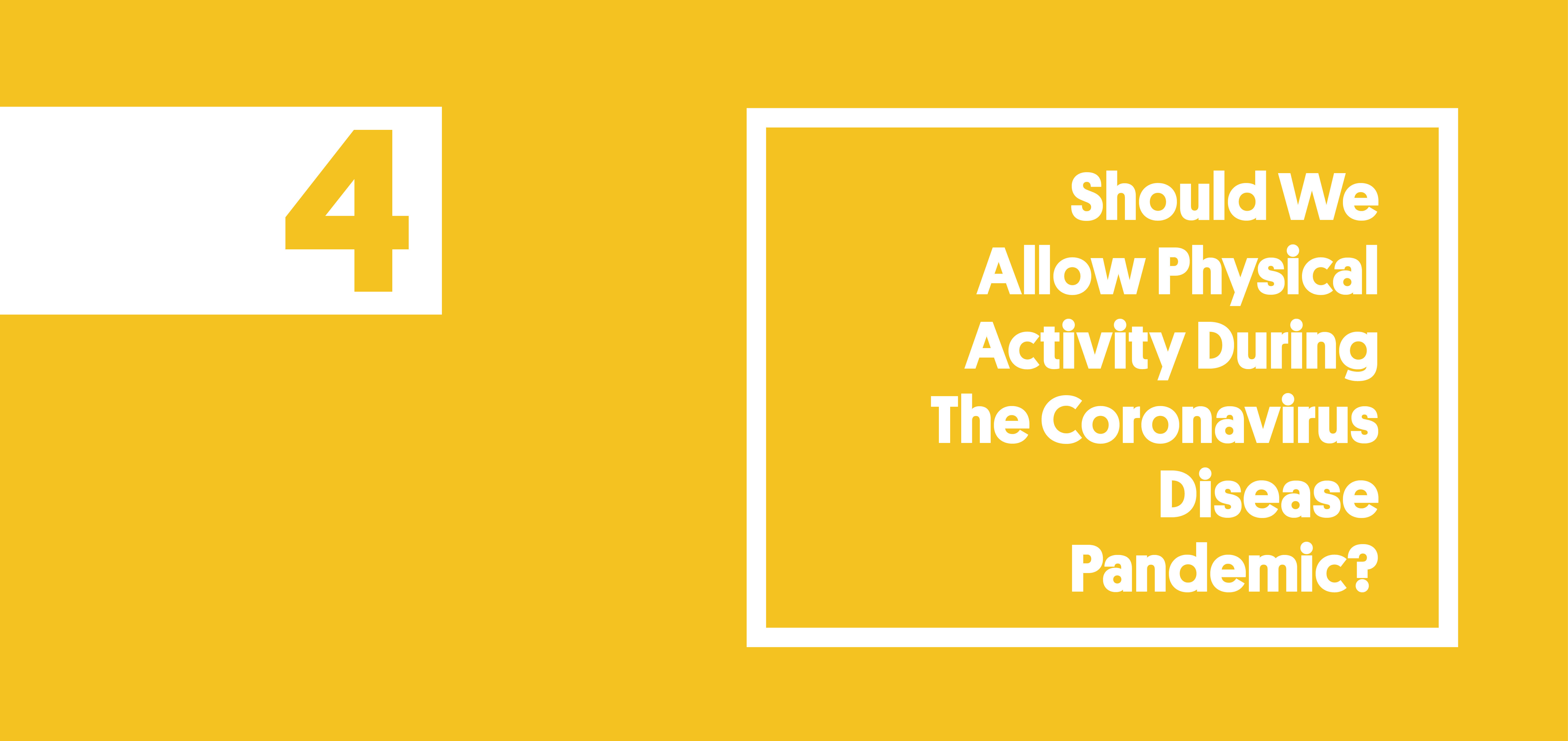Should We Allow Physical Activity During The Coronavirus Disease Pandemic?
Series | COVID-19 & Response Strategy #4
23.04.2020This document is part of a series of discussion notes addressing fundamental questions about the COVID-19 crisis and response strategies. These documents are based on the best scientific information available and may be updated as new information comes to ligh.
Written by ISGlobal researchers Sarah Koch, Jill Litt, Carolyn Daher, and Mark Nieuwenhuijsen, the document highlights that physical activity is essential for good physical, mental, and social health and should be urgently included in the deconfinement strategy. We recommend allowing up to one hour of physical activity a day outdoors , with an emphasis that people only exercise by themselves and keep a distance of at least 1.5 meters to others at all times.
Spanish confinement
Physical, mental and social health, as well as well-being, improve with the practice of regular physical activity, both in childhood and in adolescents, adults and the elderly. Spain took extreme measures to reduce the spread of COVID-19, including total confinement in homes, and allowing citizens to leave their homes only to access essential services such as buying food, going to the bank and receiving medical assistance in pharmacies or hospitals. Based on Fitbit data on monitoring physical activity using mobile devices, physical activity levels decreased by 38% after one week of confinement. The health impacts of this drastic reduction in physical activity have not yet been estimated, but they are expected to be extensive and severe.
To put this reduction in physical activity and the subsequent health threat into a broader perspective: even before the COVID-19 pandemic, only 24% of adolescents, 66% of adults, and 68% of the elderly in Spain complied with the WHO recommendations regarding physical activity.
Importance of access to physical activity abroad
The beneficial effects of regular physical activity, especially during the COVID-19 pandemic, include:
- Immune and respiratory health. Regular physical activity enhances immune competency and is important for maintenance of respiratory function.
- Mental health. It's a tool to self-manage and release anxiety and stress.
- Metabolic health. Stressful situations tend to increase high-caloric diets. With no opportunity to engage in physical activity it would be easier to increase weight gain.
- Cardiovascular health. Psychological stress, poorly balanced diets and lack of physical activity are fundamental risk factors for cardiovascular disease, and all of them have been altered by the COVID-19 crisis.
- Bone health. As a consequence of increased sedentary time, bone health is at risk, especially in boys, girls, adolescents and the elderly. For the growth and maintenance of healthy bones, a high level of strength with impact and shear stress is required.
- Social and emotional health. Physical activity helps build and maintain social connection. Group exercise programs allow people of all ages and from all professional and socioeconomic backgrounds to meet and interact, thereby combating the global threat of perceived loneliness.
Who Can Benefit From Physical Activity Outdoors?
Everyone benefits from physical activity outdoors. However, people with active COVID-19 infection, or those recovering from one, should consult with medical personnel before exercising again. It appears that the risk of contracting or transmitting COVID-19 outdoors is less than the risk of contracting indoors. Outdoor physical activity, especially in green and blue spaces (that is, in parks, coasts or lakes) provides numerous benefits, and represents - especially for people living in small flats without access to a terrace or balcony. Therefore, it is critical to provide access to physical activity in outdoor spaces as soon as possible.
What is needed?
The opening of the cities should include opportunities for safe physical activity. It is necessary to implement measures that allow the maintenance of physical distance
- Provide space: wider sidewalks and extra bike lanes, especially those that provide access to green and blue spaces; Routes that facilitate active transportation to essential services and work must be urgently implemented.
- Access to large outdoor spaces. Cars and other obstacles should be removed from market squares, open areas in parks, and roads around the shoreline and lakes, so they can be used as areas for activity Physics with distancing.
- Use of technology to help manage and schedule the use of space.
- Measures to allow physical distance. Physical activity should be done alone or with members of the same household or caregivers when necessary.
- Increase the hours of parks, market places and spaces for physical activity.
- Make different marks on the ground to indicate a distance of 1.5 meters.
- Access to hand hygiene services.
- Increased cleaning procedures.
Recommendations
Physical activity is essential for good physical, mental and social health, and should be urgently included in the deconfusion strategy.




